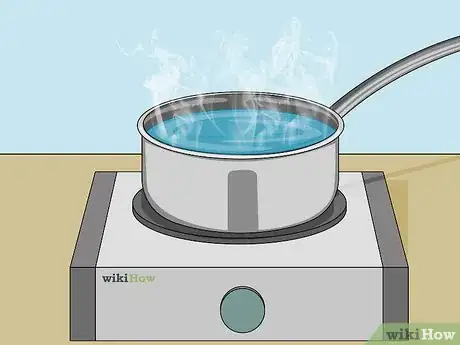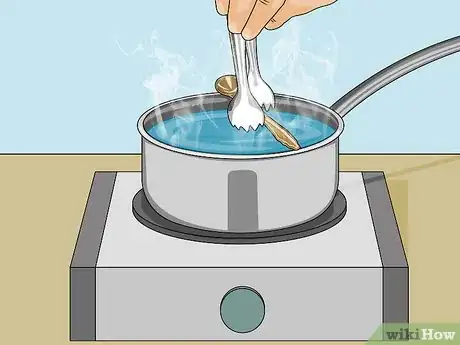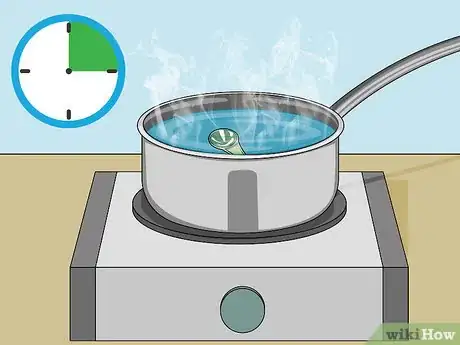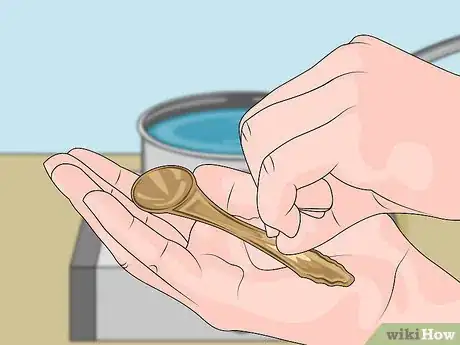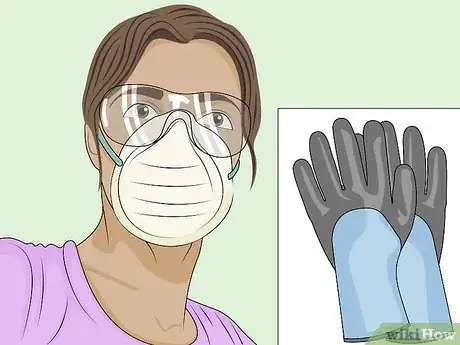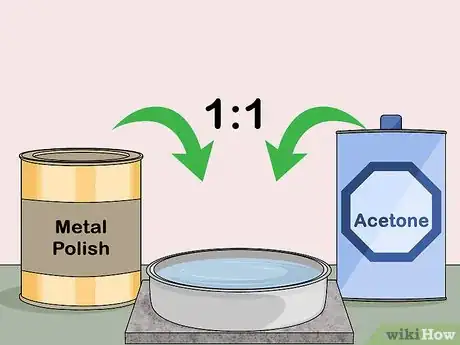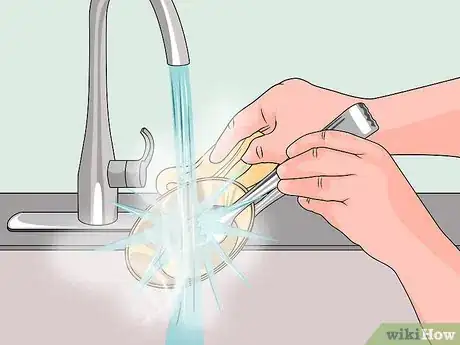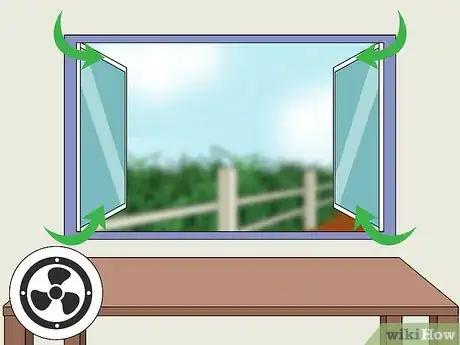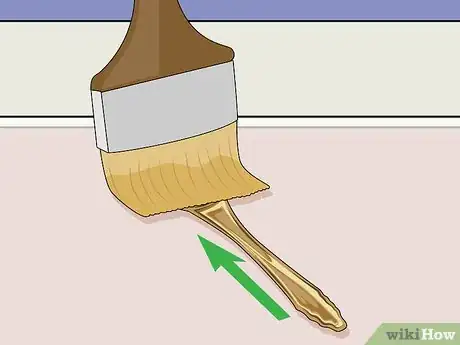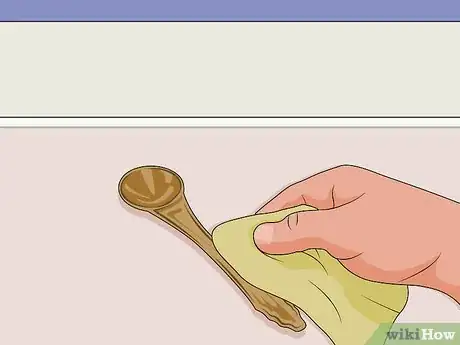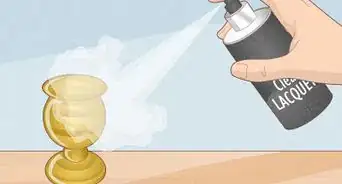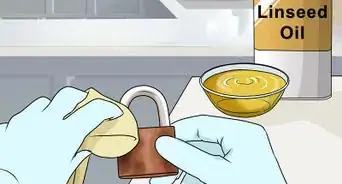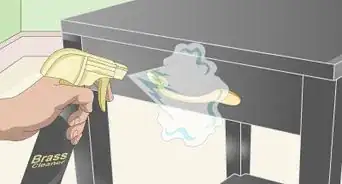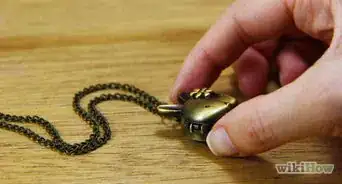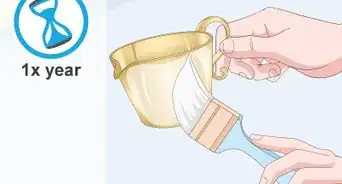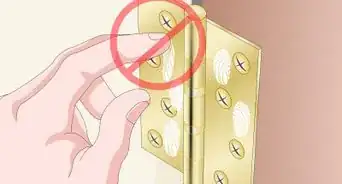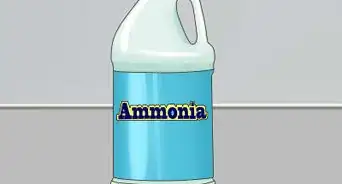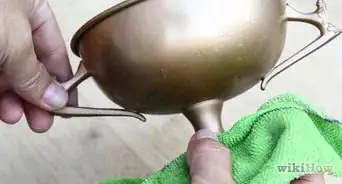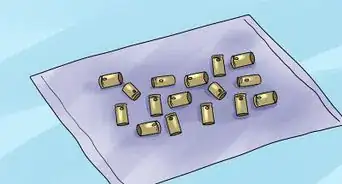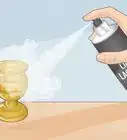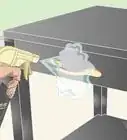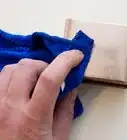This article was co-authored by wikiHow Staff. Our trained team of editors and researchers validate articles for accuracy and comprehensiveness. wikiHow's Content Management Team carefully monitors the work from our editorial staff to ensure that each article is backed by trusted research and meets our high quality standards.
wikiHow marks an article as reader-approved once it receives enough positive feedback. In this case, 90% of readers who voted found the article helpful, earning it our reader-approved status.
This article has been viewed 92,305 times.
Learn more...
Brass is a timeless material in the home—but when your beautiful fixtures and items are glazed with lacquer, it's hard to see the true beauty of the brass beyond the sheen. Thankfully, there are ways to remove the lacquer without damaging the brass. Depending on the amount of lacquer, you can remove it by boiling your brass in a special solution, using fire, or using a varnish remover.
Things You Should Know
- Boil smaller brass items in a water-baking soda mixture for 15 minutes.
- If you have a ventilated space and protective gear, coat the item with a mixture of acetone and metal polish. Set the object on fire and let it burn for 3-5 minutes.
- You can also brush the brass item generously with varnish remover and wait several minutes for the lacquer to dissolve.
Steps
Boiling Water and Baking Soda
-
1Create a solution of water and baking soda. Using 1 tablespoon for each quart of water, combine your ingredients in a saucepan or pot large enough to house your brass item. If you do not have a pot large enough, you can dip the brass halfway into the pot, then do the other side.[1]
-
2Bring the solution to a boil. Once you have combined your mixture, place it over heat and bring it to a roiling boil. The baking soda should have dissolved by this point. To facilitate dissolving, stir the solution several times as it is warming.Advertisement
-
3Insert your brass into the boiling solution. Place your brass into the boiling water, taking care to keep your own hands and fingers clear of the water. If your brass item is large, place as much of it in the mixture as possible, then repeat the steps on the other side.
- Lower your brass into the boiling solution carefully, using tongs or tweezers to minimize the risk of burns.
-
4Boil for 15 minutes. Leave your brass to boil in this solution for at least 15 minutes, removing it from heat once the 15 minutes are up. You can allow the brass to cool in the mixture, or you can remove it immediately using tongs.
- If you do remove it from heat, you can place it under cool or room-temperature water to cool it down.
-
5Once cooled, peel any remaining lacquer from the brass. Although most of the lacquer will have fallen away during the boiling process, you can wipe or peel away any remaining lacquer once the brass has cooled.
- If this is not enough to strip your brass of all of its lacquer, you may continue repeating these steps until it has all peeled away.
Acetone, Metal Polish, and Fire
-
1Place a deep glass or metal container onto a non-combustible surface. Because this method involves caustic, flammable materials, you will need a container capable of holding high temperatures without shattering or melting.
- If you use glass, make sure it is a thick, sturdy glass.
- If you use metal, be aware that the metal may tarnish.
-
2Don protective gloves and a face mask. Making sure you are in a well-ventilated area, place heat-resistant gloves on your hands, and a face mask over your nose and mouth. You should also place protective eyewear on your eyes so as not to singe your eyebrows or lashes.
-
3Pour acetone and metal polish into the container. Pour equal amounts of acetone (nail polish remover) and metal polish into your non-flammable container, making sure the mixture does not exceed more than a quarter of an inch (.635 cm). If it does reach higher, you’ll need to find a larger container.
- Once you have placed the mixture into your bowl, coat your brass item with it to encourage the fire to burn away the lacquer.
-
4Place your item into the bowl and light the brass with a long-necked lighter. Stepping as far from the container as possible, set light to the solution using a long-necked lighter or long matchstick. This will make sure the mixture is not near enough to your skin to expose you to excess heat and risk burns.
- Do not use a regular matchstick or cigarette lighter, as both require you to be dangerously close to the flammable solution.
-
5Douse the flames after 3-5 minutes of a controlled burn. The solution should burn itself out after 3-5 minutes. If it does not, douse the flames using an extinguisher or by placing a large lid over the pot. Longer than 5 minutes runs the risk of damaging your brass.
-
6Run the brass under room temperature water. Removing your brass pieces from the bowl with tongs, run them under room temperature water to cool the metal and strip away the lacquer.
- If you use cool water, the brass may cool faster, but you also run the risk of warping and staining. Room temperature water will cool the metal without damaging it.
-
7Wipe away the lacquer. If any lacquer does not wash away in the rinse, wipe away the remainder with a clean cloth or cotton swabs. This is best done while running the item under water, as a dry piece of brass may not release its lacquer easily.
Varnish Remover
-
1Move to a well-ventilated area. Varnish remover has a strong chemical odor, and can be harmful if inhaled continually. Before applying your remover, move to an area with a fan, a window, or both.[2]
- If you do not have a well-ventilated room, take your project outside to a yard, porch, or balcony. Avoid using solvents indoors whenever possible.
-
2Place a protective layer beneath the brass. To prevent stripping or staining of whatever surface you are working on, place a protective layer beneath the brass, such as a sheet of newspapers, a tablecloth, or a strip of plastic.
- Paint dropcloths also work well, and are usually thick and durable enough to withstand the caustic nature of varnish removers.
-
3Wear protective gloves and face gear. Working with varnish remover, you’ll need to keep your hands, lungs, and face protected. Wear gloves to prevent the solution from reaching your skin, and place a face mask over your mouth and nose to minimize the amount of fumes you inhale.[3]
- Covering your mouth and nose is particularly important if you do not have access to an outdoor space or well-ventilated area.
-
4Using long, sweeping strokes, apply the varnish remover. Coat the entire piece in a generous layer of remover, making sure you don’t skip or miss any spots.
- To apply the lacquer remover, simply place a paintbrush into the remover and apply it directly to the brass. Make sure you do not leave behind any of the brush’s bristles, as these may interfere with the remover’s efficacy.
- If your brass piece has a lot of small nooks and crannies, you can use a bottle brush or small rag to access hard-to-reach spaces.
-
5Wait the time allotted by your removal brand. Different brands have different wait times, so make sure you follow the directions on your particular brand of lacquer remover. While it may be tempting to use the remover for longer than is recommended, you may actually damage the brass by doing so. Only use the remover in recommended increments.
-
6Wipe away the remover and varnish. Following the directions for your remover, wipe away the removal solution. This should take the lacquer with it, revealing the unfinished, raw brass beneath. If the varnish remover does not take away all of the lacquer, repeat as many times as necessary to remove all of the coating.[4]
- To reach hard-to-reach spots, you may want to enlist the help of a second brush to remove varnish.
Warnings
- Do not use the fire method on a windy day, as wind can cause the fire to leap and spread.⧼thumbs_response⧽
- Only boil and burn your brass in contained conditions.⧼thumbs_response⧽
- Always have fire protection materials on hand when working with an open flame. This includes heavy gloves for your hands, safety goggles for your face, and an up-to-date extinguisher.⧼thumbs_response⧽

